Interview with the artist Albert Kaan
Hello everyone,
This is my 8th Blog which will be about an interview with the artist Albert Kaan who was born in Bucharest in 1993. He always had an interest in the arts, especially sculpture and therefore graduated from the Sculpture Department at the National University of Arts in Bucharest in 2016.
His work is strongly related to his urban experiences. He combines industrial materials, such as iron and tar with the more traditional modelling clay, plaster, or charcoal to create sculptures of generous sizes that can either be exhibited outdoors or in white cube and industrial spaces.
Albert Kaan combines media in such a way that he distances himself from tradition, but still manages to integrate it into his works. He gives sculptures a new dimension, as he also makes light and sound installations which create a special sensory experience for the public.
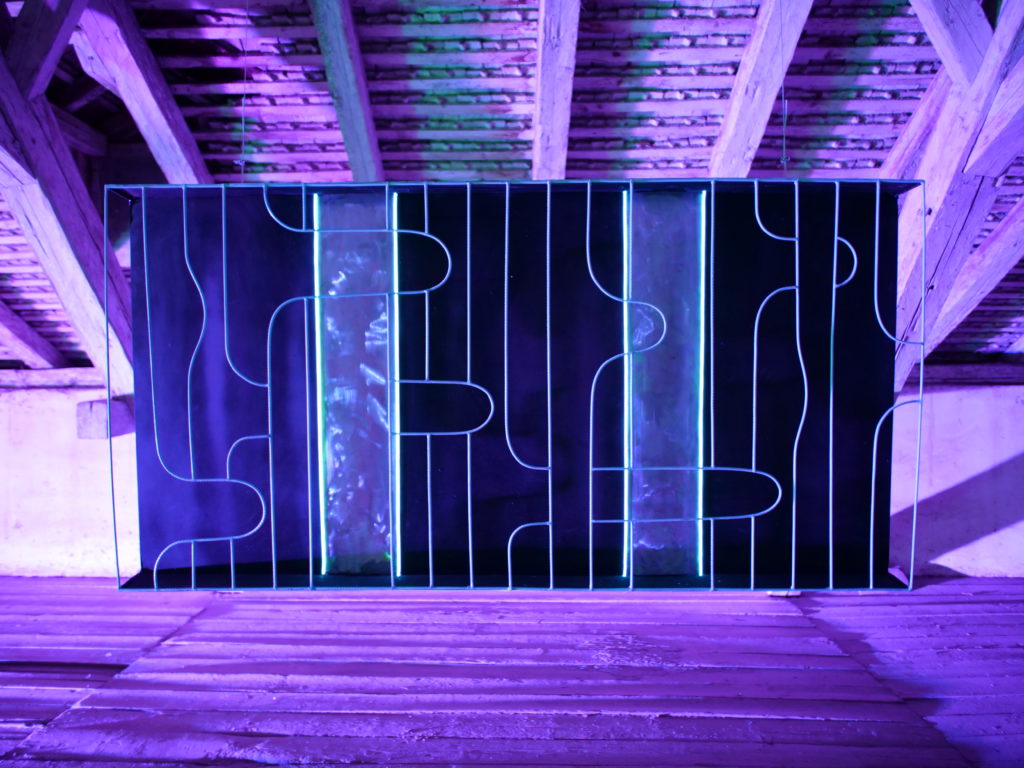
2018, wire, steel-board, paint, El-wire, 100 x 200 x 10 cm
© https://418gallery.com/exhibitions/form-vibration-time-illusion/
This interview was held via Zoom, as I am in Munich as you know and Albert Kaan who usually lives in Bucharest has taken refuge in the countryside in the current situation; there, he is creating new sculptures and at the same time working on sustainable farming.
Please enjoy the interview with the artist, should you have any further questions about him you can visit: https://418gallery.com/artists/albert-kaan/.
Antonella Grevers: Hello Albert and thank you for agreeing to this interview. I understand that you decided to go to the countryside during the pandemic, because you wanted freedom and felt that you were suffocating in Bucharest?
Albert Kaan: I grew up in the countryside and have therefore always hated staying locked inside, not being able to walk around, biking through the city or going to the studio. Out here I have the studio and house together, a bit of land and I’m close to the forest. It is completely different to the city.
AG: I also heard that you started sustainable farming. How and when did you decide on doing that?
AK: I started planting tomatoes and potatoes right away when I arrived here. I used to do this when I was a kid, so it wasn’t really hard for me.
AG: That sounds like a pleasant diversion in these times… Thank you for sending me the pictures of your new works, I liked them very much, where did you get the inspiration from?
AK: I have this obsession with masks lately, especially tribal masks, they probably inspired me. I think there are infinite ways to play with masks.
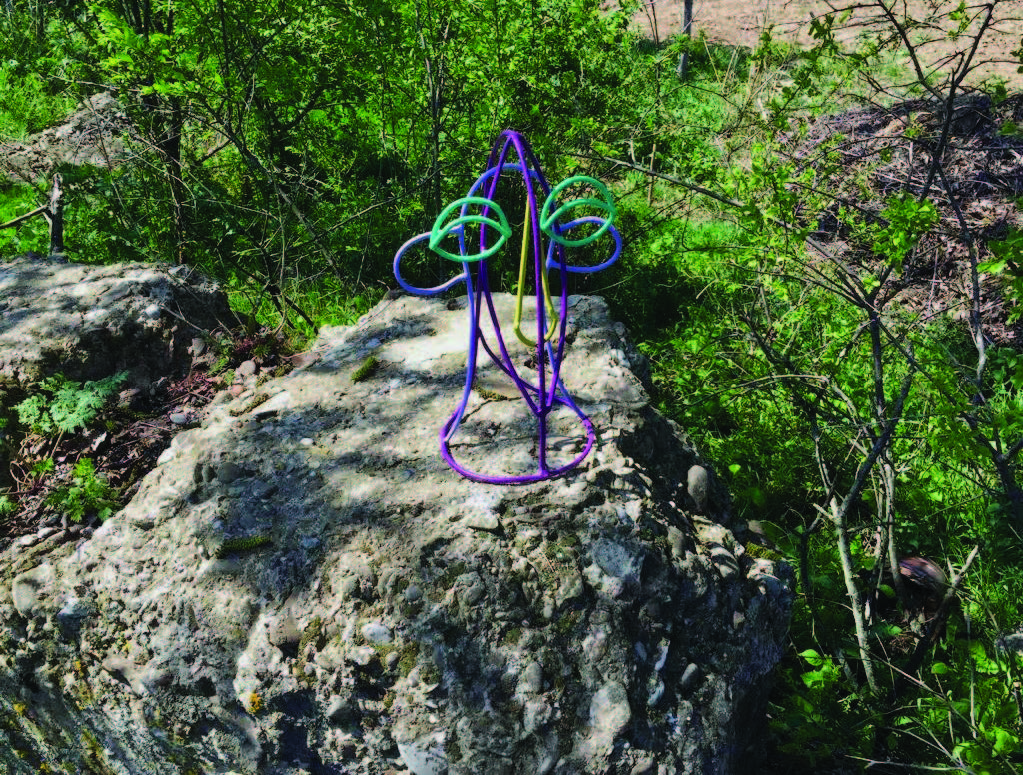
2020, steel wire, 40x20x20 cm
© Albert Kaan

2020, steel wire, 40x20x20 cm
© Albert Kaan
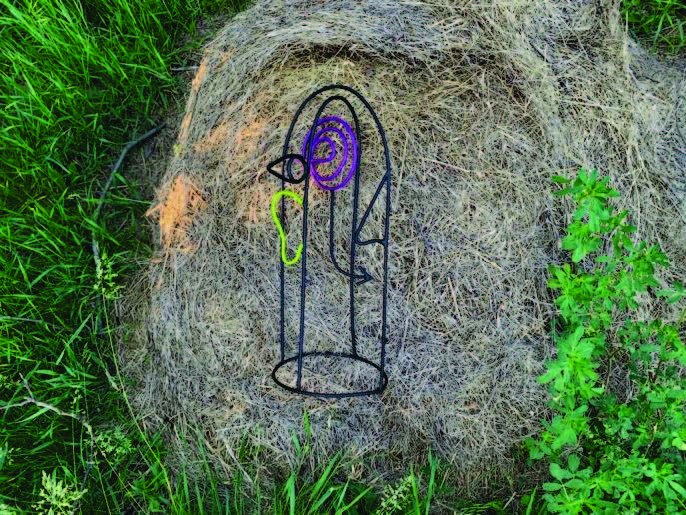
2020, steel wire, 60x25x25 cm
© Albert Kaan
AG: Yes, tribal masks have something magical. I remember they were very inspirational for Picasso at the beginning of the 20th Century in Paris… I’d like to come back to your personal history. I remember that you modelled, also for Dries van Noten, when you were younger. Why did you stop and when and how did you decide to become an artist?
AK: I was an artist way before I became a model. This job was good for travelling around the world almost for free, going to many different places and absorbing every bit of culture. This didn’t make me more creative but helped me to understand and contextualise myself more.
AG: That sounds very interesting. I understand where you’re coming from, as different cultures can inspire you in certain ways. Some of your works combine traditional and industrial materials, how did you come up with this idea?
AK: The traditional and industrial materials say a lot about the places I grew up in and at the moment it can be translated as a part of my aesthetics.
AG: You were the student of Aurel Vlad at the University in Bucharest who mainly worked with wood and sometimes steel. Why did you decide to change the materials to create your own works?
AK: Aurel Vlad was my teacher and before him there was Eugen Cubassa. Both of them traditional sculptors, I felt like I needed to make works that are more reflecting of our times. And I was also not a student who would choose what his teacher would tell him to pick.
AG: What are your thoughts about the relationship between light and line and how did you come to use light as a way of drawing?
AK: The line is often present in my works to highlight a specific area, or to double the same outline, multiplying it. Sometimes I use it in order to guide people and just to make sure they stay in that specific environment. Light as video mapping or beams of light can create diverse effects which bring various emotions. That’s what I look for.

2018, square pipe, wood, El-wire, 400 x 2000 x 84 cm
© Antonella Grevers
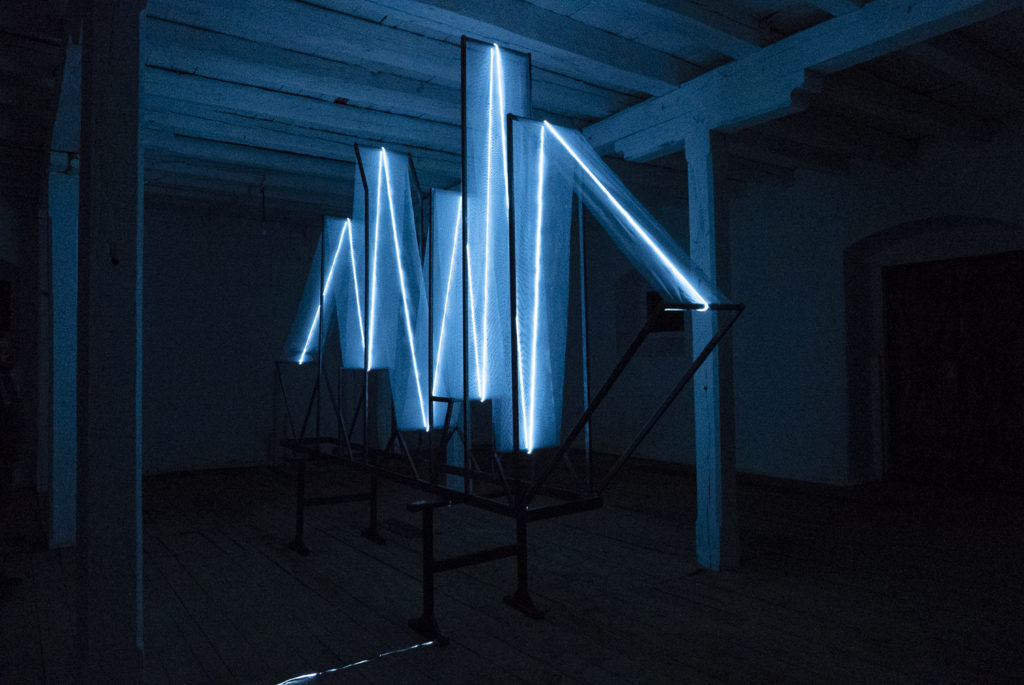
2018, square pipe, mesh, El-wire, marker, 260 x 500 x 50 cm (by night) & 1024 x 685 cm (by day)
© https://418gallery.com/exhibitions/form-vibration-time-illusion/

2018, wire, steel-board, paint, El-wire, 170 x 120 x 10 cm
© https://418gallery.com/exhibitions/form-vibration-time-illusion/
AG: You’ve started working with light and sound and made installations as well as sculptures with these media. I think it is interesting to combine these two as it’s not often the case. You also want your audience to have mental and sensory experiences, while enjoying your art. This is a very interesting concept as it invites the public to immerse themselves within your works. How did you decide on this idea and what influenced this development?
AK: The light and sound as a new media tool used together in installations is not particularly a new thing. Especially not my idea for sure. I have a couple of artists that I follow out of curiosity and by watching them and everything surrounding them, I get some new ideas and new ways for an installation or a live performance show, which I would make in a specific manner. We are partially the construct of what we see and hear, and I think it’s so exciting to experiment with lots of media rather than sticking to a few.
AG: Your artmaking differs from the traditional way as you mix a lot of media together. This is a challenging task. You are so young, just 27, and you seem to be finding your own individual language already?
AK: I think my works follow each other and lead to one another so that they kind of influence me and I am just feeding this new idea that hides another one around the corner, and I might walk by it, missing it. So, having that fear I wouldn’t say I have a specific language.
AG: Well, I can’t wait to see your future exhibitions and see where the journey takes you. Are there artists which are a kind of role-model to you, or which have influenced the way you’re making art?
AK: I have some independent artists and also some groups that I follow closely, and they generally made me question the dimension of space and how to work with it. Also, I am interested to see how they work with structures and how they choose to manipulate light. My favourite ones at the moment are 404.zero and White Void Berlin.

© https://www.skalar.art/amsterdam.html
AG: Thank you Albert for the interview, wishing you a continuous inspiration in the countryside! I’m looking forward to getting pictures of your next works.

2020, steel wire, 57 x 31 x 20 cm
© Albert Kaan
For more information about other young Romanian artists and their work, please have a look at the following links:
https://arthotshot.com/kinetic-artist-stefan-radu-cretu/
https://arthotshot.com/adina-mocanu/
https://arthotshot.com/young-artists-young-friends-new-contemporaries/
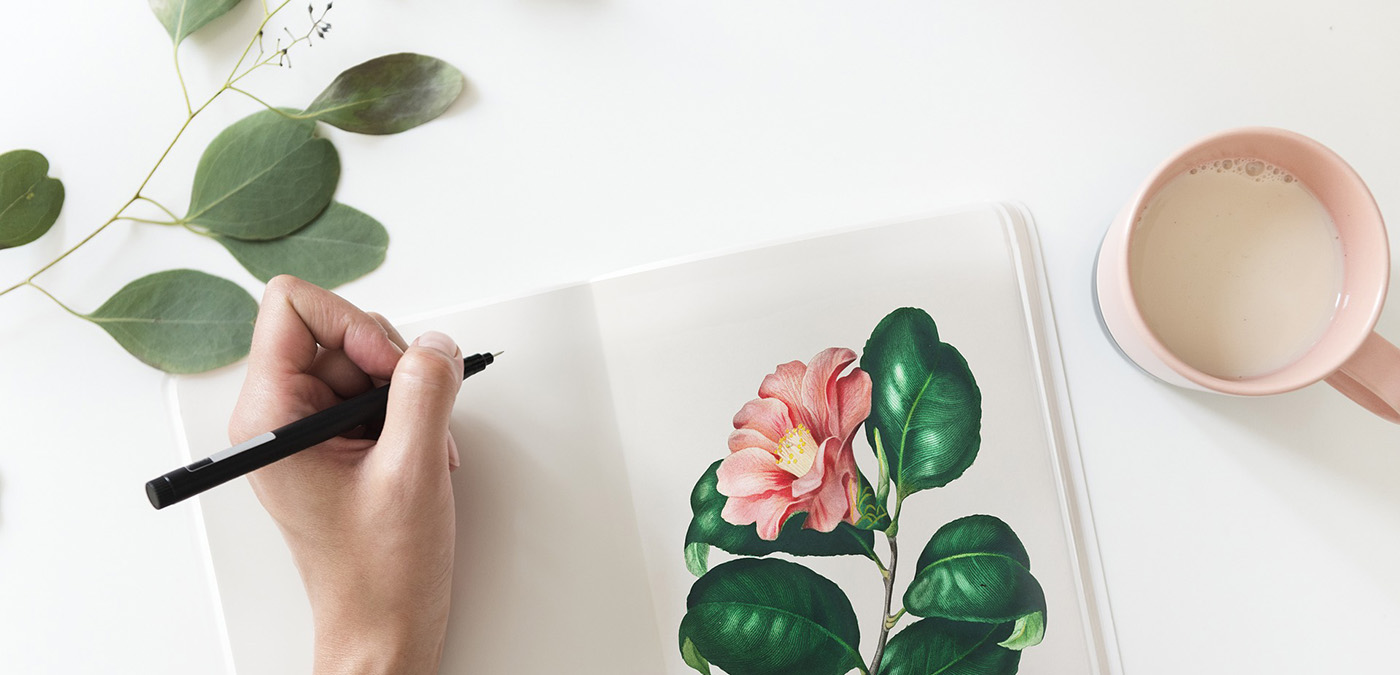
-
-
2 years
Tagged #Bucharest, #contemporaryart, #museumofrecentart, #nationalhistorymuseumromania, #nationalmuseumromania